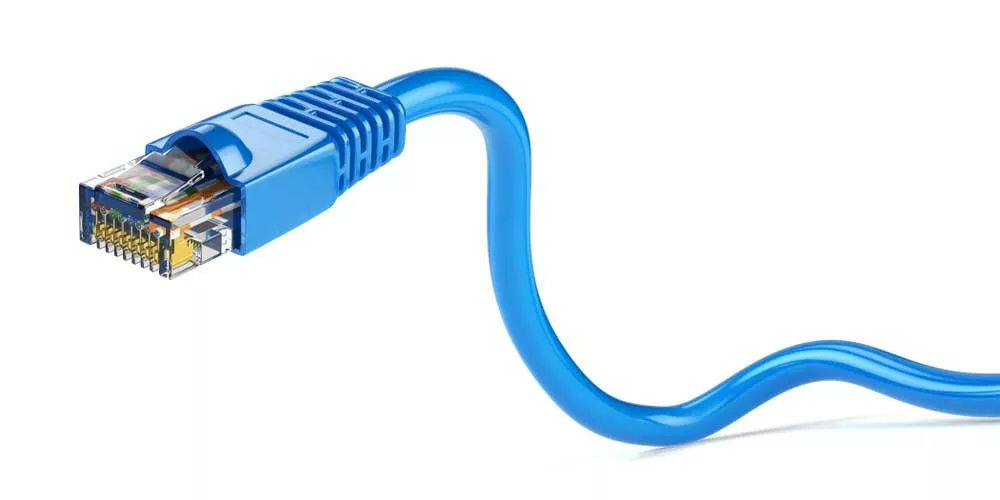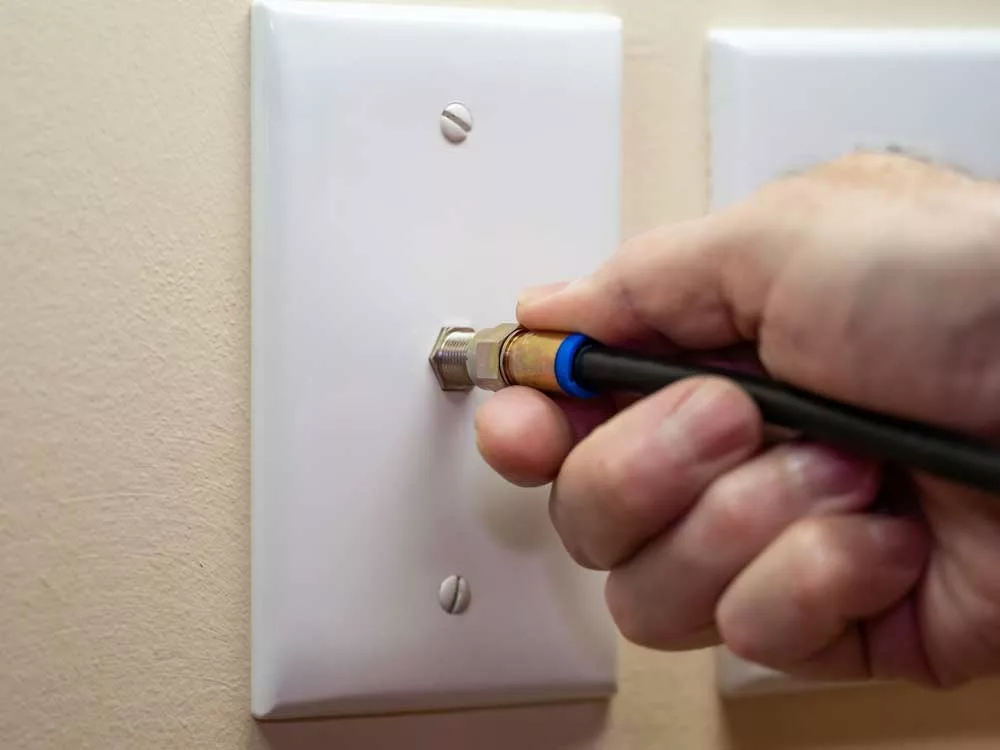Coaxial vs. ethernet cable is easy to decide because they are different in almost every way. The only similarity may be that they are both networking cables, mostly containing copper.
The design, internet speed, preferred application, and installation cost differ.
But how do you choose the right one for your project? Don’t worry; we will find out based on the differences.
Table of Contents
- What is a Coax Cable?
- What is an Ethernet Cable?
- Coax vs. Ethernet: Here are the differences
- Coax Cable Vs. Ethernet Cable: How to Choose
- Coax Cable Vs. Ethernet Cable-FAQs
- Coax Cable or Ethernet Cable: Which One Should I Buy?
What is a Coax Cable?
Coaxial cable, or coax, is an electric cable featuring conductors covered by three outer layers. These include a tubular insulating layer followed by a conductor shield and an outer jacket.
The shield and the conductor are metals (usually copper but sometimes aluminum) capable of carrying electric current.
The name originates from the shield, and the conductor (the inner wire) shares a geometric axis. An axis of coaxial cable is an imaginary line that runs through the center of the cable, down the length.
Coax cables come as thinner as in the case of RG6 or thicker than in RG11. But from a general point of view, these cables are the oldest version and don’t match today’s highest speed. However, they still have a wide range of applications we will learn as we read.

Coax cables
What is an Ethernet Cable?
Ethernet, also known as CAT, features four twisted pairs of copper wires surrounded by an outer jacket. Unlike in the case of coax, the twisted pair cables don’t share an axis with anything.
Ethernet cables are the most popular for connecting and creating a local network and come in different types. You will choose from twisted copper (CAT 5), Standard Cable (CAT 6), CAT 7, and CAT 8.

Ethernet cable
Coax vs. Ethernet: Here are the differences
Application
An Ethernet offers an internet connection and connects devices to a local area network (LAN). LANs connect devices within a building or a group of neighboring buildings. Ethernet can also be used in metropolitan area networks (MAN) and wide area networks (WAN) connections.
They are the backbone of any computer network. In addition to computers, they can work with any device with an ethernet port. These include TVs, routers, modems, PCs, and most network and internet-enabled devices. They enable computers and other devices to share files and data effectively.

Ethernet cable network
Coax cables used to be very common in long-distance telephone networks but have been replaced by satellite systems and fiber optics. However, they are still the dominant cables connecting television to the antenna.
The cables can also be found connecting radio receivers and transmitters to their antennas.

Coax cable connecting TV antenna.
Bandwidth
Ethernet and Coax are also different when it comes to bandwidth capacity. The newer generation of Ethernet networking cables has a higher bandwidth capacity than Coax.
A CAT 7 cable has a maximum bandwidth of up to 750 MHz.
Length
Coax cables run a longer distance before it loses speed compared to ethernet. It can have a run limitation of up to 800m. This is eight times better than ethernet cables with a run limitation of 98ft – 328ft (30m -100m).

Coax cable running length.
Speed
Ethernet cables outshine Coax when it comes to internet speed. For instance, Even the older version, category 5 (CAT 5), can convey a speed of 100MBit/s compared to that of Coax, which is only 10MBit/s. The latest spec in the cable block, CAT 8, increases throughput to 40Gbps.
Susceptibility to Interference
Though these two cables are less susceptible to interference, shielded cables are better in this category. The inner metal shield in the coaxial cable helps block interference and noise.
The twisting of Ethernet also cancels out interference but not as much as coax shielding. For ethernet cables with better shielding, CAT 7 and CAT 8 are double-shielded. The first shielding is around each pair of wires, and the next is around the entire bundle of wires.
Installation
Because coax cables are bulky, they are more challenging to install than twisted cables. The thicker design is the most cumbersome to install. The thinner design is flexible and can bend through sharp corners, but not as much as ethernet cables will.
Ethernet cables are more flexible and easy to install. However, the level of flexibility varies across the categories, with the older categories feeling more flexible.
In terms of the installation cost, Coax is relatively cheaper. Expect to spend between $0.06 to $0.17 per foot for coaxial cables compared to $0.10 and $1.13 for ethernet cables.

Ethernet cable installation
Coax Cable Vs. Ethernet Cable: How to Choose
You choose these cables based on the categories discussed above. You can choose Coax if you want cable for TV and radio antennas. Most companies also prefer this cable for commercial connection of their main network to the neighborhood due to its ability to run longer distances.
Ethernet, however, will suit you if you want a cable for computer-dominated applications. You should also consider it if you want a cable to connect most network and internet-enabled devices. It has better internet and data transmission speed.
Coax Cable Vs. Ethernet Cable-FAQs
Is Coaxial Cable Better than Ethernet Cable?
Coaxial and ethernet cables have strengths depending on your preferred application. Coax cables are very effective as television antenna cables. Ethernet provides an internet connection and can connect devices that require a network or internet to work, such as computers.
Can you Use a Coaxial Cable Instead of Ethernet?
You can use a coax cable in place of Ethernet with an ethernet adaptor. This device allows you to coax your wiring into an ethernet connection without a long wiring project.
How Fast is Ethernet Over Coax?
Ethernet is a cable with a gigabit speed of up to 40Gbps. The fastest is the CAT 8. However, even other categories still have a better speed than Coax cable’s 10MBits.
Which is Better, Cat6 or Coaxial Cable?
CAT6 remains the most popular ethernet cable. It is a better option than Coax regarding speed, ease of installation, and bandwidth. However, Coax also has a better run length and is less susceptible to interference.
Coax Cable or Ethernet Cable: Which One Should I Buy?
The difference between these two cables is very clear. What you should buy will depend on the preferred application. Coax is still a good option when it comes to TV connection. However, we recommend Ethernet for more advanced networking involving your computers and routers.
